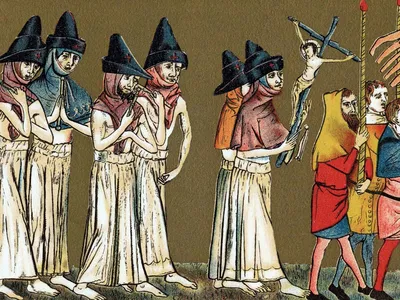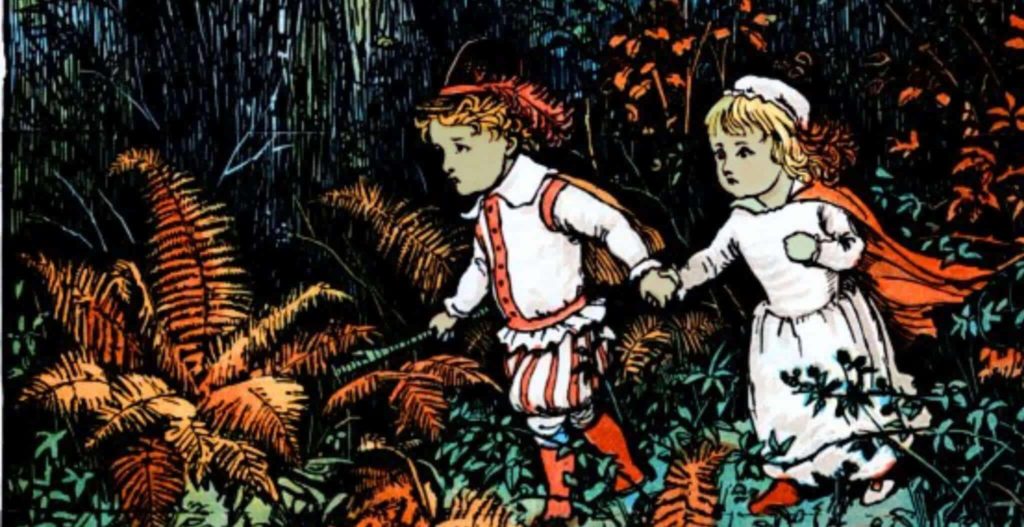Last updated on January 29th, 2023 at 10:48 pm
Most people are familiar with the events of the Black Death, as it killed upwards of half of the continent’s population in the space of half a decade between its first arrival in Italy in 1347 and the end of the first wave in the early 1350s.
But what was just as significant was what happened after the Black Death. How did Europe cope logistically, economically, and psychologically with this apocalyptic event?

The Effects of the Population Decline
Perhaps the most tangible aspect of life in the aftermath of the Black Death was the sheer level of death that had occurred. This had two major impacts in the aftermath of the plague.
Firstly, people needed to adjust psychologically to the passing of their loved ones. People had been buried swiftly during the plague to avoid the spread of further contamination.
Now, in its aftermath, people needed to mourn and try and process what had occurred. Often this had a sinister edge, such as when people sought to find someone to blame. There were pogroms of Europe’s Jews across the continent immediately following the epidemic as adherents of Judaism became a scapegoat for the suffering of Christians.
More pragmatically, there was a massive labor shortage due to the plague for decades to come. As this happened, Europe’s peasants and laborers suddenly found themselves in a very advantageous position as wages skyrocketed.
Soon, however, governments, anxious to prevent the lower orders from gaining too much power, introduced legislation such as the Statute of Labourers passed in England in 1351, which capped wage increases and even the ability to ask for pay hikes.
Despite these measures, there is no doubt that workers found themselves in a more advantageous position for several decades after the Black Death.
The Black Death Possibly Led to the Renaissance
It has also been suggested that the Black Death contributed greatly to the emergence of the Renaissance in Italy.
The plague had provoked a crisis in the politics of Late Medieval Europe. All of a sudden, governments had to start reacting with speed and efficiency to the spread of the plague.
As they did, they began becoming more efficient. Bodies needed to be buried quickly to stop the spread of the disease. Resources needed to be allocated to regions that were particularly badly hit.
Improved reporting systems had to be developed so that the royal courts in London, Paris and elsewhere knew when a major outbreak had hit York or Bordeaux, for instance.
All of this saw governments becoming more potent in terms of managing people. While the Renaissance is typically perceived as a cultural movement, it was, to an equal extent, about the emergence of strong, centralized states with efficient bureaucracies.
The Black Death was, in large part, responsible for the first development of this. And it was in Italy where this process occurred most tangibly as city-states like Venice, Florence, and Genoa adopted new powers to fight the plague.
Changing Belief Systems
The Black Death also incited profound changes in European people’s belief systems. One of the most striking aspects of this was the emergence of the European witch craze.
In an age when scientific knowledge was still very basic, and people understood the world through religion, magic, and elements of residual Pagan belief, people turned to the supernatural to try to explain why the appalling events of the late 1340s and early 1350s had occurred.
Some began to believe that a rise in the number of individuals in league with the devil within society could only explain the suffering inflicted upon them.
While the medieval church had condemned the belief in witches and witchcraft, from the time of the Black Death, there was a growing consensus that witches were present within society, stirring up evil for people everywhere.
This paranoia grew gradually in the next century until it peaked between the fifteenth and seventeenth centuries in what is typically called the European Witch Craze, a period in which hundreds of thousands of people, primarily women, were accused of witchcraft across Europe.
Upwards of 100,000 were found guilty of these imaginary crimes and executed, and it all started with the Black Death.
Similarly, the wider church changed considerably as a result of the pandemic. Europeans quickly suggested in the late 1340s that the plague was god’s retribution due to Europe’s Christians diverging from the correct path of salvation. As a result, there was a growing piety amongst certain branches of Christianity from the Black Death.
In addition, many individuals began claiming that the church needed to be reformed from the imperfection into which it had fallen.
While the Protestant Reformation did not occur in its full form until the early sixteenth century, its roots are found in the aftermath of the Black Death when reformers such as Jon Wycliffe in England and Jan Hus in Bohemia began calling for massive reforms of the church.
The Little Ice Age
Most incredibly, the Black Death has been deemed to have contributed extensively to the so-called Little Ice Age, which occurred globally between the fifteenth and seventeenth centuries. This was a period of pronounced global temperature decline when levels fell by as much as 1.5 degrees Celsius worldwide.
Many commentators have speculated that the sheer decline in global population levels brought about by the Mongol conquests, the Black Death, and the introduction of European diseases into the Americas between the thirteenth and sixteenth centuries caused this Little Ice Age.
Thus, many different societal and environmental changes occurred in Europe and further afield after the Black Death, directly attributable to the disease and its appalling consequences on the continent.
The Black Plague in Later Years
Of course, the plague did not disappear either in the mid-1350s. On the contrary, it remained an omnipresent feature of European life for over 300 years, with the last major outbreaks occurring in England as late as the 1660s.
And life evolved in significant ways in Europe in the decades that followed as a result. For instance, quarantine, a period of isolation wherein people who had arrived in a specific place had to isolate themselves from others, was developed in the post-Black Death years.
The word comes from the Italian for ‘forty’, quarantina, which was the number of days that the trading republic of Venice required merchant ships arriving in the port to wait in the harbor before they could unload their goods.

